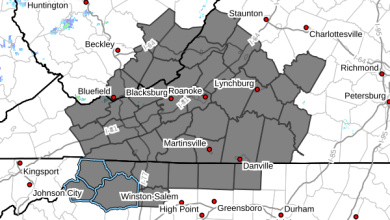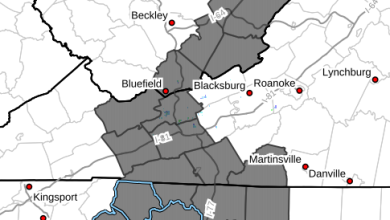Last Updated on February 12, 2022 6:22 pm
This week has been declared North Carolina Severe Weather Awareness Week for 2012.
Today’s topic will be lightning.
Lightning occurs with all thunderstorms and is what defines a thunderstorm. Central North Carolina faces dangers from lightning throughout spring and summer. Over the course of one year, the earth will be struck by lightning nearly 20 million times. In a typical year there are around 500,000 lightning strikes in North Carolina resulting in around 9 to 12 strikes per square mile. From 2001 to 2010, North Carolina ranked 5th in the nation for lightning fatalities. In 2011 there was one known lightning fatality in the state. Every year an average of 55 people are killed by lightning strikes. Nearly all lightning deaths are the result of cardiac arrest, so knowing how to respond quickly using C.P.R. can save a life. To avoid becoming a lightning statistic, just remember, when thunder roars go indoors.
What causes lightning and thunder?
Lightning results from the buildup and discharge of electrical energy between positively and negatively charged ice particles within the storm cloud. A thunderstorm generates a huge static electrical charge as ice particles inside the storm collide and through friction. These particles of suspended ice in the thunderstorm collide as they are carried around by the storm’s updraft and downdraft. Once the static electrical charge is strong enough to travel from the cloud to the ground, a lightning bolt is created.
A lightning bolt contains as much current as three hundred thousand amperes and around 300 million volts. The intense electrical current instantly heats the air around the lightning strike to 50,000 degrees. This is five times hotter than the surface of the sun. This instantaneous heating of air around the lightning strike causes the air molecules to explosively expand. This expansion occurs so rapidly it compresses the air forming a shock wave similar to a sonic boom. The shock wave travels through the atmosphere, resulting in thunder. The acoustic shockwave near the lightning strike is strong enough to rupture the eardrums of those standing nearby.
Since light travels faster than sound, you can use thunder to gage the distance of a lightning strike by counting the number of seconds between the moment you see the flash of lightning and hear the clap of thunder. For every 5 seconds that go by after seeing lightning and before you hear the clap of thunder, that’s one mile. Keep in mind
this technique only tells you how far away that one lightning strike was from your location. The next one could be a lot closer. Lightning can travel 10 to 12 miles from a thunderstorm. For that reason, anytime you hear thunder or see lightning, seek shelter indoors. When thunder roars go indoors.
Most lightning fatalities occur when people are caught outside working, playing, boating or golfing. Because of the abundance of outdoor activities in North Carolina, we are especially vulnerable to lightning. If outside, move indoors if possible as soon as
thunder is heard. If caught outdoors, stay away from trees, telephone poles, and other tall objects. A hard-topped vehicle will offer good protection from lightning. When boating, try to seek safe shelter well before the storm approaches.
When indoors, do not use corded telephones and stay away from windows. Also stay away from plumbing and water sources such as the sink, tub or shower. In many cases lightning finds its way into your home though the utilities. When sheltering from lightning, stay indoors for at least 30 minutes after hearing the last clap of thunder.
This should guarantee your safety.
More information about lightning can be found by visiting…
http://www.lightningsafety.noaa.gov
http://www.srh.noaa.gov/srh/jetstream
















